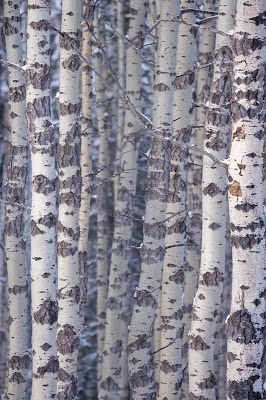
Over the centuries, artists, writers and composers have broken the current and accepted rules of their art. Most often this engenders howls of outrage, sometimes simple neglect, and occasionally some enthusiastic responses from a limited audience.
In many cases, the lack of response was well deserved and they are never heard from again, some gain momentum and become the leading edge of progress in the art and become famous in their lifetime (Picasso) and other times, their audience isn't ready for them and only years later does their work become appreciated, often after their death - talk about lousy timing).
Most of the really outstanding artists learn to work within the rules before learning to break them and I have written before that I think this is the problem with much of the avant garde work we see published - it's made by people who didn't earn their fame.
That said, what about you and me, about people who have learned to work within the rules, who have mastered the technical and are reasonably competent at the artistic side of image making? Is there a difference between experimentation and outright leading the pack, breaking new ground, actually inventing and creating? Can one lead to the other? Are most of us wasting our time, knowing we aren't Picasso?
I should point out that leading the pack comes with a significant price. Not only may your work not be appreciated for years (if ever or in your lifetime), but you risk downright ridicule, criticism, ostracism and a whole flock of other isms! It's one thing to experiment, while continuing to produce fine images in a style not too far removed from those you have been successful with previously. It's entirely different to completely abandon your previous style, equipment, modes and output for something uncertain, unproven and frankly unwanted. This takes guts, determination, self confidence bordering on megalomania and a large dose of pig headedness.
it's my opinion that experimentation is one thing, a radical alteration of what you do because you feel you need to change is another thing entirely. One might make the case that first you experiment and if it helps you express yourself, then you move to this new technique or style and abandon the old. One sees classic large format landscape photographers who give up on silver prints to go to platinum and when that isn't unique enough, start making albumin and other exotic prints, some of which are frankly bizarre in appearance - cyanotype and so on - they become so wound up with technique that I can't help feeling it has more to do with differentiating themselves from all the other large format photographers than it does with creative expression, but I could be wrong - it just seems that way when you look at their new "improved" images.
With millions of creative photographers across the world (and with the internet, national boundaries mean little these days), the chance to produce really different, new, significant work is pretty minimal. For me, I'd be happy with significant over new and different every day of the week but that's me.
I guess it comes down to whether you have exhausted all you can say with the work you are already doing, whether you need to change to keep yourself stimulated and if you have something to say in a new field or way.
In the mean time, and on the basis of a good grounding in standard practices, why not edxperiment with some of your work. There is a photographer who has taken the images of the Bechers(they of mine heads) and reshot them multiple times in different sizes and aligments - lovely.
Andre Gallant has done some very nice work with multiple exposures while rotating the camera slightly between images. I think that slow exposures of people in action has not been fully explored yet and can produce lovely results - it's hardly new but still has potential.
I haven't seen a lot of really nice lens baby work though some of the Holga work is wonderful - not sure why the difference.
Normal photography has at least one thing sharp in the image, but is that really the only way?
We play with infrared looks but really - do colours need to relate at all to the real world - or could we go hog wild and have purple skies and orange grass? Perhaps in the future "straight" colour photography will be discounted as mere snapshots.
The lead image is from a photograph by Lawrence Christmas of me, one I used for my book flap, and which I had fun playing with in Photoshop - clever? not especially. Original? Definitely not. Fun? Sure was. Would I do it again? absolutely!
I'm not much of a rule breaker. How about you - do you burst out every so often, breaking even your own rules for a good image? How? Did it work? Do you let anyone see the result? Might it lead somewhere? Does it matter?





































